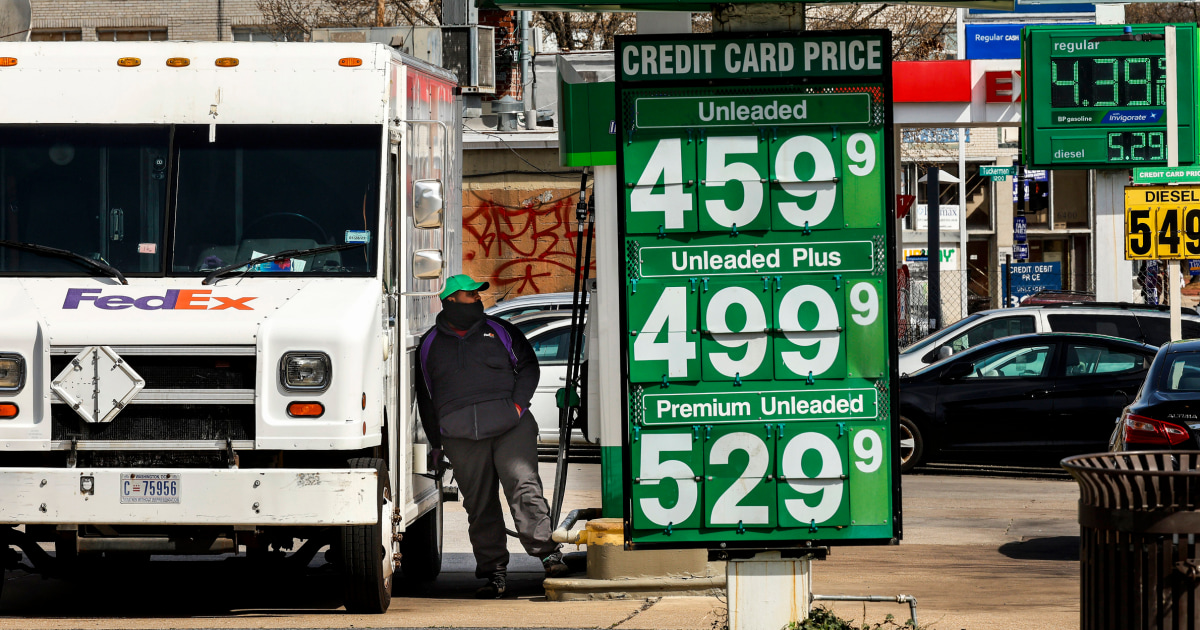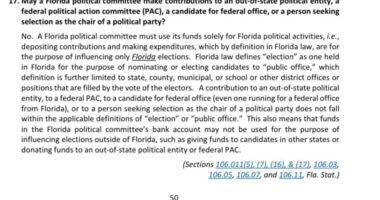
U.S. inflation data hit a multidecade high last month amid surging gas prices and skyrocketing rents, climbing to 8.5 percent, the Bureau of Labor Statistics reported Tuesday.
A survey by the financial data group FactSet had predicted that the inflation reading for March would come in at 8.4 percent year-over-year — the highest rate since December 1981 and an increase from February’s 7.9 percent.
Although gas prices have begun to trend downward recently, the change was not reflected in the inflation reading for March — a month that saw record high prices at the pump. Gas prices jumped 48 percent year-over-year, the BLS said, and climbed 18.3 percent from February.
Meanwhile, rental rates have now experienced eight-consecutive months of increases, and now sit above the pre-pandemic trend. Rents climbed 4.4 percent in March year-over-year, compared with 4.2 percent in February. The average rent for a two-bedroom home in the U.S. is now about $2,000, according to research from Rent.com — up 22 percent on a year-over-year basis.
“Robust pay increases have been no match for the higher costs households are facing on rent, food, electricity, gasoline, and a pervasive list of both goods and services,” Bankrate.com Chief Financial Analyst Greg McBride said in a note Friday. “The buying power of Americans is being squeezed more and more each day, and you see this reality reflected in the dour consumer sentiment readings.”
McBride is referring to recent data from the University of Michigan’s Consumer Sentiment Index, which measures how people are feeling about the economy and their personal finances and fell to 59.4 in March, compared with 84.9 one year ago. The Conference Board’s Expectations Index, based on consumers’ short-term outlook for income, business and labor market conditions, declined to 76.6 from 80.8.
However, “core” inflation, which excludes volatile food and gas prices, climbed 6.5 percent year-over-year and 0.3 percent month-over-month — slightly less than the figures expected by FactSet analysts. The soft reading was driven by the biggest drop in used vehicle prices since 1969.
Markets’ initial reaction responded favorably to those figures, Bloomberg reported, with U.S. stock prices and treasury yields climbing and the dollar erasing early losses.
Fed expected to raise interest rates
All signs point to the Federal Reserve moving forward on its plans for a series of interest rate hikes to help slow the economy and fight inflation. Last month, it raised its key federal funds rate from near zero to a range of 0.25 percent to 0.5 percent. It is currently projecting at least six more rate hikes this year.
The higher funds rates are already affecting mortgage lending volumes. Some large U.S. banks are tightening their credit requirements for consumers seeking home loans.
Yet some economists now say the Fed is facing inflation forces it cannot easily control. The shock to energy prices from Russia’s invasion of Ukraine, in addition to ongoing supply chain constraints from the pandemic, mean higher prices for goods could persist.
That, in turn, is pushing consumers’ expectations of future inflation higher.
“The longer inflation remains high, the more it gets embedded into wages and other contractual arrangements,” Alan Blinder, a former Federal Reserve vice chairman and an economist at Princeton University, said in a Wall Street Journal op-ed last week. “When workers see inflation coming, they want to be compensated for it. And once higher inflationary expectations get entrenched, they affect price- and wage-setting throughout the economy, making a soft landing harder to achieve.”
Jason Furman, a former White House chief economist, wrote last month that the Fed will be lucky if it is able to pull inflation back to a 3 percent annualized rate.
“If inflation does settle there, it would be very painful to bring it down much more,” he said, adding that doing so would likely require engineering a recession.
The Fed “should make clear that it will continue its steady increase in interest rates as long as inflation remains substantially elevated and the job market is not worsening,” Furman said. “This type of soft, data-dependent forward guidance would help tighten financial conditions today.”
Household response
Other economists are more sanguine about whether households can absorb higher inflation.
“We see some notable factors helping households today,” Wells Fargo economists said in a March 31 note. “Households are in decent financial shape and this should not be overlooked,” the note reads, concluding that: “Wage growth has been robust and shows few signs of slowing amid strong demand for labor. This is beneficial to households even if inflation is currently eating into much of the recent gain.”
Wells Fargo highlighted that the personal saving rate rose to 6.3 percent in March. Since that is below the pre-pandemic rate of 7.8 percent, it implies a decline in “excess” savings. The bank estimates there is still about $2.3 trillion in excess savings currently outstanding.
“We expect a decent chunk of it is at the disposal of households should they wish to rely on it,” they said. “More simply, we expect households to save less in the near term to offset some of the hit to purchasing power from rising inflation. If they don’t, spending could falter more than we presently forecast.”
Soft landing?
There’s at least one sign that inflation could cool sooner than expected, given the gradual slowdown in the housing market and an improving outlook for semiconductor supplies. Recent used-car sales data shows vehicle prices have now declined for two consecutive months, according to Cox Automotive’s Manheim Market Report.
If the end of price hikes in that sector can filter through elsewhere and begin to put pressure on wages, inflation could even return to below the Federal Reserve’s current expectations level, said Ian Shepherdson, chief economist at Pantheon Macroeconomics, in a note to clients released Monday.
“The idea that overall core inflation can return to 2 percent over the next year — even with rent inflation still running hot — is entirely reasonable, if you believe that improving chip supply will trigger a move towards mean reversion in margins, while slower wage growth eases pressure in much of the non-rent services sector,” he wrote.
In other words, Shepherdson suggests that a better outlook on the inflation front could hinge on the semiconductor supply returning to normal and wages stabilizing to the point that consumer prices begin to cool down.
While he expects core goods inflation, excluding autos, to remain high until supply constraints ease, he wrote that those components account for less than 10 percent of “core” inflation readings.
“We think [readings of inflation expectations] put too much emphasis on the very recent past,” he wrote. “Things change.”
Source: | This article originally belongs to Nbcnews.com










